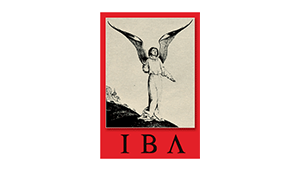Inactuelles, musiques singulières, September 2018
Musique classique & Co, June 2018
Ritmo, April 2018
Pizzicato, October 2017
Classica, September 2017
blog.about-music.de, September 2017
American Record Guide, September 2017
The WholeNote, August 2017
Gapplegate Classical-Modern Music Review, August 2017
WGBH, August 2017
The Beachcomber, June 2017
WFMT (Chicago), May 2017
David’s Review Corner, May 2017
Records International, May 2017
Inactuelles, musiques singulières, September 2018
Musique classique & Co, June 2018
LEXNEWS, October 2017
nice-matin, October 2017
Classica, September 2017
Qobuz, August 2017
LesVeillesMusicales, July 2017
Musicologie.org, June 2017
Le Journal de Montréal, June 2017
En pistes !, May 2017
A surprise in the first notes: the sound of the piano. Nicholas Horvath has chosen a ‘period piano’ to create a colour that is more delicate, softer, less metallic than that of the modern Steinway and Yamaha © 2018 Classique Mais Pas Has Been
I cannot recommend enough to all fans of Satie’s music and those who would love to discover it these three recordings by Nicolas Horvath on the label Grand Piano. Aside from the amazing interpretations, these discs offer nothing less than a rediscovery of the composer through the new Salabert edition, edited by Robert Orledge, a professor of musicology and Satie specialist, after long conversations with the pianist. The liner notes that accompany these discs stand as models among their kind, complete and exciting. © 2018 Inactuelles, musiques singulières
SATIE, E.: Piano Works (Complete), Vol. 1 (New Salabert Edition) (Horvath) GP761
SATIE, E.: Piano Works (Complete), Vol. 2 (New Salabert Edition) (Horvath) GP762
SATIE, E.: Piano Works (Complete), Vol. 3 (New Salabert Edition) (Horvath) GP763
…very well recorded. Everything was very well interpreted. Among the discoveries were the mesmerising mystical sounds of the Prélude du Nazaréen, as well as upsud. A future reference for this music. © 2018 Musique classique & Co

SATIE, E.: Piano Works (Complete), Vol. 1 (New Salabert Edition) (Horvath) GP761
SATIE, E.: Piano Works (Complete), Vol. 2 (New Salabert Edition) (Horvath) GP762
In all of these works, [Horvath] manages to distill and present all the attributes of the shy and lonely artist [Satie], with the piano as the medium for communicating this, based on simplicity, clarity, precision, elegance and economy of means. © 2018 Ritmo

Nicolas Horvath launches his Satie series with early works and some premiere recordings. The pianist uses the new Salabert Edition and Cosima Wagner’s own 1881 Erard piano, Satie’s instrument maker of choice. His performances are clearly defined in the most objective may. As interesting this might sound at the very beginning, and despite a nuanced and lively playing, the listener progressively gets the impression that the music lacks variation in terms of colours. Nevertheless, this is an interesting undertaking and we look forward to the next releases. © 2017 Pizzicato

Horvath plays with wonderful intensity on an Erard 1881 piano once belonging to Cosima Wagner, applying a discrete humorous touch, clearly in the spirit of Satie, who was in his time deeply contemptuous of French Wagnerism… Nicolas Horvath thus succeeds, with presence, the first stage of his project and should soon cover the entire body of works. Performed with objectivity, seduction and vivacity… © 2017 Classica
Very very promising first volume of a new Satie complete piano works recording by Monegasque pianist Nicolas Horvath. Fantastic sound, excellent instrument and delicate playing. © 2017 blog.about-music.de
Many of these pieces are enjoyable; most are rather light and brief, others simplistic and dull. Horvath plays with the skills of a thoroughly grounded academician. I hope to hear more imagination as the series progresses. Good sound and fabulous notes by Robert Orledge bring considerable lustre to this first outing. © 2017 American Record Guide Read complete review on American Record Guide
Horvath does a splendid job in presenting this unusual repertoire. The four Ogives are almost entirely vertical and hymn-like in their replication of plainchant. Said to have been inspired by the Gothic arches of a neighbouring church, these are perhaps unlike most of Satie’s other music. © 2017 The WholeNote Read complete review
Horvath’s interpretations are meant to be faithful to Satie’s vision and as such they are not spectacularly slow or fast, not extrovertedly dashing so much as concentrated.
Strongly recommended. © 2017 Gapplegate Classical-Modern Music Review Read complete review

French pianist Nicolas Horvath explores the eccentric mysticism of one of the leading minds of modernist music. © 2017 WGBH Read complete review
French pianist composer and archetypal eccentric Erik Satie gets meticulous attention from Horvath on Satie, Complete Piano Works Vol. 1. Twenty seven pieces drawn from Satie’s early years make up what I hope is only the first installment of more Satie from Horvath. Here, Satie is still trying on and shedding outside influences (Chopin, for one), and there’s a more formal, romantic, light classical feel to the pieces, with titles like “Sarabande.” Still, there’s a hint of the mature Satie, the sly archness and intellectual jokes that characterize later works like “Dried up embryos” and “Three pieces in the form of a pear.” © 2017 The Beachcomber
Erik Satie’s earliest works show traces of Chopin as an influence but he soon came to reject virtuosity, choosing instead to remain with the French traits of simplicity, clarity, elegance and economy. This landmark recording by Nicolas Horvath uses a new edition played on Cosima Wagner’s own 1881 Erard piano, Satie’s instrument maker of choice. © 2017 WFMT (Chicago)
It is rare that I review a CD that is accompanied by such copious and informative notes that complements this first in a complete cycle of Eric Satie’s piano music. It relates the origins of this first definitive printed edition of all Satie’s works that exist for solo piano, some of these unknown even to his enthusiasts, and are here receiving their world premiere recording. In his younger years, Satie was looked upon as something of an odd-ball figure who enjoyed a Paris coterie who only wanted to be different. He belonged to that group of composers who rejected the previous Romantic era, but who still clung to the world of tonality. Having entered the Paris Conservatoire in 1879 at the age of thirteen, he departed soon after, and it was in the three years beginning 1908 that he eventually committed himself to becoming a pianist and composer. This first disc using the new Salabert Edition offers works in order of composition written between his two periods of study, and is as diverse as the brief opening Allegro, which lasts for less than half a minute, through the substantial group of three Sarabands and onto the Sonneries de la Rose Croix, the disc’s most extended work. At this point he had yet to create an individual musical voice, and initially it was the influence of Debussy that was present in his harmonic language. We have known little of this period, though the Trois Gymnopedies, written when he was twenty-two, have been passed down as one of his most frequently heard works. The decision to record them on an 1881 Erard piano was questionable, as to ‘modern’ ears this particular instrument—which belonged to Wagner’s wife—sounds rather like an upright that has known better days being recorded in a large and empty hall. The tempos of the outstanding French pianist, Nicolas Horvath—from whom the idea of making these recordings emanated, are sometimes unexpected, particularly in the slow approach to the Trois Gymnopedies, though he obviously has a great fondness for the music. Two further volumes are expected soon. © 2017 David’s Review Corner
The second announced new complete Satie piano cycle in just a few months is distinguished not just by using the newest corrected edition of all the works but also the use of a famous historic piano by Satie’s preferred factory. © 2017 Records International
































